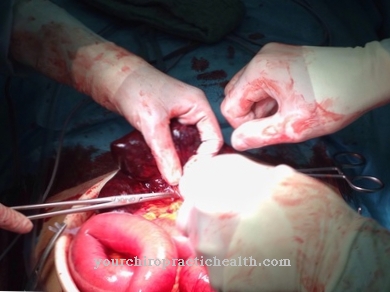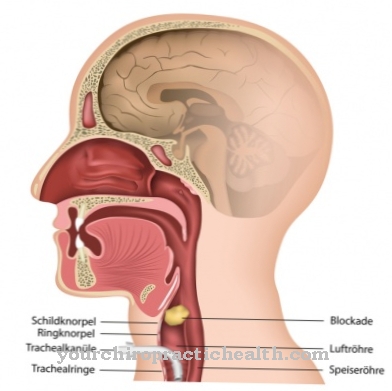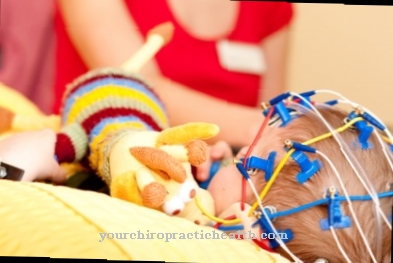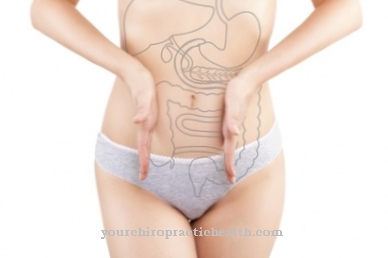Under the term Pharmacokinetics all processes are summarized to which the medicinal substances in the body are subject. It is about how the body affects the drugs. In contrast, the influence of the active ingredients on the organism is called pharmacodynamics.
What is pharmacokinetics?

Pharmacokinetics describes the release, uptake, distribution, biochemical metabolism and excretion of drugs in the body. In short, this overall process is called LADME designated. The word LADME is made up of the first letters of the English designations for release (liberation), uptake (absorption), distribution (distribution), metabolism and excretion.
The terms pharmacokinetics and pharmacodynamics must not be confused. The description of pharmacokinetics is not about the mechanism of action of the drug, but about its change under the influence of the body. Conversely, the mechanism of action of the drug on the target organ is described under the term pharmacodynamics. Pharmacokinetics was established in 1953 by the German pediatrician Friedrich Hartmut Dost as a result of his finding that dose recommendations for drugs for adults and children must be determined according to different principles.
Function, effect & goals
The five phases of pharmacokinetics are divided into the invasion and evasion phases. The invasion phase includes release, uptake and distribution. In this phase the active ingredient is supplied to the organism. The metabolism and excretion of drugs is part of the evasion phase (execution from the body).
A release (liberation) of the active ingredient is necessary if the drug is not already in dissolved form. Liberation is the pace-determining step in the entire process. Therefore, the dosage form of the drug must be adapted to the desired speed of its effectiveness. Since rapid effectiveness is desired for acute pain, rapid-release tablets or effervescent tablets are administered here. If symptoms such as nausea and vomiting occur in addition, the administration of suppositories makes more sense despite the slower release of the active ingredient.
There are special challenges with the need for modified drug delivery. This is e.g. B. the case if the active ingredient would be destroyed by stomach acid. In this case, it may only be released after the tablet or capsule has passed through the stomach. This goal can be achieved by appropriate formulation of the tablet with an acid-resistant protective layer. The protective layer is then dissolved in the small intestine. Furthermore, so-called prolonged-release tablets can ensure a delayed release of the active ingredient in order to extend the dosing interval. Some therapeutic systems rely on the controlled release of the active ingredient over a long period of time.
In the second step, the active ingredient is absorbed into the bloodstream. If the drug is administered in liquid and dissolved form, the previous release step is omitted. The resorption process can take place via various mechanisms, such as passive diffusion through cell membranes, carrier-mediated diffusion, active transport or phagocytosis. Many physical or chemical factors influence the absorption. The size and blood flow of the absorption area as well as the contact time with it play a major role.
A shortened contact can result, for example, from a too fast intestinal passage in the case of diarrhea, whereby the effectiveness of the drug is severely restricted. In the third step, the active ingredient circulates in the blood and is thus distributed throughout the body. This is how he gets to the target organ. The distribution also depends on many parameters such as solubility, chemical structure or binding capacity to plasma proteins. The structure of the organs, the pH value and the permeability of the membranes also play a role. In the fourth step, the so-called metabolism of the active ingredient occurs mainly in the liver.
It is first functionalized and then hydrophilized in a further step. During the functionalization, oxidation or reduction reactions or hydrolyses take place. The active ingredient either becomes ineffective or even increases its effect. In some cases, toxins can also be produced during metabolism. During the hydrophilization, the medicinal substance is given a functional group that makes it water-soluble. The reaction product can then be excreted in the urine in the fifth step of pharmacokinetics.
Risks, side effects & dangers
Each phase of the pharmacokinetics of a drug also holds risks for the organism. The release phase alone determines the effectiveness of the drug's action. In the worst case, the drug can remain completely ineffective if the dosage form is unsuitable.
Pharmacy is also faced with the challenge of formulating tablets or capsules in such a way that they develop their effect at the right time or are effective over a longer period of time. The absorption of the active ingredients can also be disturbed by intestinal diseases. In these cases, other dosage forms must be found for the medication. When the drugs are distributed in the body, they can sometimes accumulate in certain organs. Fat-soluble drugs in particular are stored in adipose tissue and can often only be removed from the body very slowly.
The greatest problems can arise in the metabolism of the active substances. The chemically modified substances often also have other effects on the organism. Many side effects result from special breakdown products of drugs. Sometimes the metabolism even increases the effect. If several drugs are taken at the same time, metabolism can vary at different rates. The more slowly metabolized drugs accumulate and their effects are enhanced. Pharmacokinetics can explain many drug side effects and cross-reactions between different drugs.

.jpg)














.jpg)
.jpg)



.jpg)






